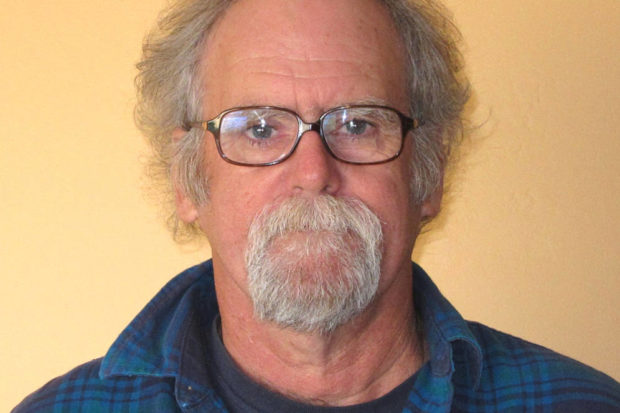
By Tom Frantz
There may be a need to clear up public misunderstandings about different types of air pollution. Under the federal Clean Air Act, there are several different categories of harmful air emissions that are regulated separately. Although different in their effects on public health, the San Joaquin Valley Air Pollution Control District (Air Board) oversees the applicable rules for each. There is a commonality in its approach to protecting the breathing public, and it is not unfriendly to new sources of pollution.
One category of air pollution includes the toxic or hazardous emissions that are listed by the Environmental Protection Agency (EPA). These might be emissions of benzene or hexane from oil production. Alternatively, a coal plant might emit mercury and chromium compounds. Methyl bromide or chlordane can drift into nearby homes from agricultural operations. Factory dairies release varying levels of hydrogen sulfide and methanol, which are both poisonous gases.
A second category of emissions are the criteria air pollutants. These are the ones that either directly pollute our air with fine particulates or are precursors to secondary pollution such as ozone and indirect fine particle compounds.
Particles found in wood smoke and the soot from diesel engines are other types of criteria air pollutants that harm human lungs. Nitrous oxide (NOx) emissions from combustion combine with volatile organic compounds (VOCs) from fuel, solvents and alcohols to form ozone during our warm months. NOx also mixes with ammonia to form ammonium nitrate, which is more than half of our fine particulate problem in the winter time. NOx, VOCs and particulates are the most common criteria air pollutants.
Ironically, ammonia is not controlled in the San Joaquin Valley. This is a political decision because the majority of ammonia emissions are coming off of factory dairies. The EPA goes along with this folly by not making ammonia a listed criteria air pollutant.
A third category of air pollution is relatively new for the EPA. This one includes various types of greenhouse gases (GHGs). The EPA decided in 2012 to formally declare GHGs as a form of air pollution under the Clean Air Act. These gases are indirectly harmful to the environment because they cause the earth to heat up. But they are not necessarily harmful to breathe. Carbon dioxide (CO2), the most important greenhouse gas, is essential for life, harmless to breathe as part of our atmosphere, but a threat to our climate when it gets out of proportion with its historical averages.
There are some unfortunate consequences of categorizing GHGs as a form of air pollution. Wind and solar energy are obviously labeled clean because they do not emit criteria air pollutants and because they do not emit carbon dioxide. A biomass power plant is called clean because the fuel source has been labeled “renewable.” Unfortunately, the criteria air pollutant emissions from a biomass plant are anything but clean.
Labels can be misleading and harmful to public health. In Kern County, a power plant proposal to burn sewage sludge, which is trucked into the Valley from large urban areas, was approved by supervisors as a clean energy plant because the fuel was considered renewable. It didn’t matter that it was a filthy air polluting project, and it used more energy than it produced.
The Air Board is governed by representatives from Boards of Supervisors and City Councils. They have authority over controlling toxic emissions and criteria air pollutants. They think they may have some authority over GHGs as well. That authority has been tentatively delegated from the Air Resources Board, but there are no rules yet.
Our Air Board is not a group that waits for rules to be imposed on local industry. It has been quietly filling an emission reduction credit (ERC) bank with GHG credits in the hope that this will help new polluting businesses to locate in the Valley.
Over the past couple of years, the Air Board has quietly certified an inventory of more than 150,000 tons of CO2 emission reduction credits. These ERCs have come from closed cotton gins and a few oil field operations. The future use of these credits is unknown. There may come a time that a proposed industrial project that uses fossil fuel energy may be required to mitigate its GHG emissions under the California Environmental Quality Act. The project will have the option to mitigate these emissions by purchasing the appropriate number of credits from the air district controlled bank.
Without a doubt, this banking of GHG credits is designed to specifically promote the locating of new polluting industries in the San Joaquin Valley. We have seen this for years with the unfettered and unjustified banking of criteria air pollutant credits and their use as mitigation for new pollution sources. Now GHG banking is part of the same corrupted system. Welcome to the Valley!
*****
Longtime clean air advocate Tom Frantz is a retired math teacher and Kern County almond farmer. A founding member of the Central Valley Air Quality Coalition, he serves on the CVAQ steering committee and as president of the Association of Irritated Residents. CVAQ is a partnership of more than 70 community, medical, public health, environmental and environmental justice organizations representing thousands of residents in the San Joaquin Valley unified in their commitment to improve the health of Californians. For more information, visit www.calcleanair.org.
